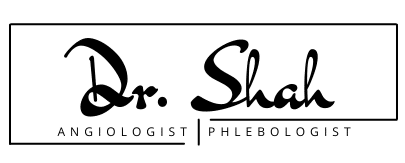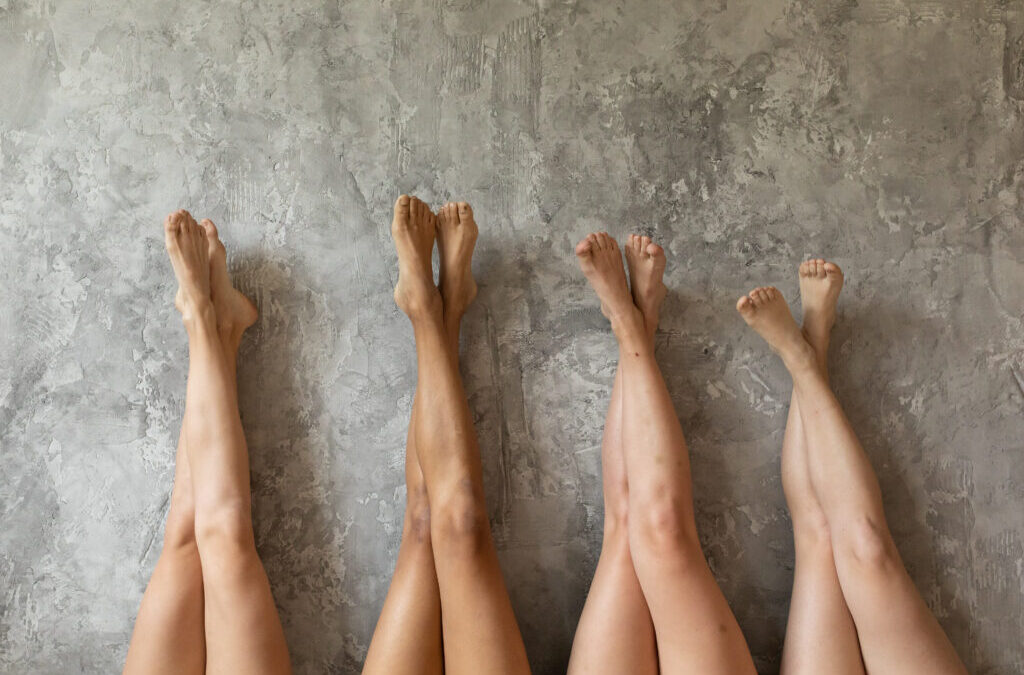One of the biggest complaints of varicose veins is concomitant pain. Varicose veins form when the venous valves are no longer able to push blood up through the leg, against the flow of gravity. As a result, blood unites in the vein and causes it to swell. Dark, protruding veins may be visible just below the surface of the skin. Whether there are visible signs or not, you may feel heaviness, itching, fatigue, or pain in your lower leg. The only way to fully treat the vein is a visit to a specialist phlebologist. In the meantime, there are various options for managing pain levels.
Raise your legs
Who doesn’t like to relax? Sometimes kicking your feet up can be exactly what you need at the end of the day to take care of your veins. A long day on your feet or sitting in a chair can lead to even more tense veins. By raising your legs, you give the united blood the opportunity to drain. This can relieve some of the swelling and pain caused by varicose veins. Try putting your feet on a table or lie down and prop your feet on a few pillows. You can also lie down and put your feet on a wall to lift them. No matter which method is best for you, I recommend holding the position for at least 15 minutes.
Use cold water
Cold water is great for relieving swelling – including swelling caused by varicose veins! Choose cold water over hot water when bathing. This can help constrict blood vessels and minimize swelling. On the other hand, it is also important to avoid hot water. Heat can have the opposite effect on your veins, which can inflate them even more. If you’ve noticed that your veins feel worse after a hot shower, try a cooler one instead.на вода.
Less salt, more potassium
A diet high in salt can lead to water retention, which can put unnecessary pressure on stressed veins. Salt reduction can minimize water retention. Keep in mind that most of our salt doesn’t come from the salt shaker. It often hides in processed foods. Read labels to make sure you don’t unknowingly increase your salt intake. Even if the packaging claims that its contents are low in salt, the label may tell a different story.
Increasing potassium intake may also be an effective way to minimize water retention. The abundance of delicious foods can give you a healthy potassium boost. Try taking almonds, lentils, potatoes, and leafy greens during your next shopping to add more potassium to your diet.
Wear compressive socks
Compressive socks gradually put pressure on the foot, with the greatest pressure near the ankle. This helps minimize the pain and swelling associated with varicose veins by gently circulating the pooled blood back along the leg. Compression stockings come in a variety of compression sizes and levels, so it’s best to consult an angiologist about them to make sure you’re getting the size that will be most beneficial to your health.ените.
Eat more flavonoids
Flavonoids can improve circulation, leading to lower blood pressure and looser blood vessels. Foods high in flavonoids include vegetables such as onions, peppers, spinach and broccoli. There are also very tasty fruits with a high content of flavonoids. Try taking citrus fruits, grapes, cherries, apples or blueberries.
Exercise regularly
Many jobs require employees to stand or sit for long periods of time. This can create problems for healthy blood circulation and put a lot of strain on the veins in the lower leg. Regularly taking breaks for a walk or stretching during the day can promote healthy blood circulation. Frequent low-impact exercise, such as walking or swimming, can also help strengthen your calves and lead to better circulation. You don’t need an extensive exercise program – a 30-minute walk or swimming every day can benefit your veins.
Choose comfortable clothes
Tight clothing and certain shoes can limit blood flow. This is not good for anyone, but it is especially problematic when you are already experiencing pain from varicose veins. Instead, choose loose clothes and comfortable shoes. You’ll get an added bonus if clothing keeps you cool at hot temperatures, as warm weather can also lead to unwanted leg pain.
Try some dietary supplements
There are specific dietary supplements that have been shown to reduce swelling and can relieve some of the pain in varicose veins. Venotonics strengthens the vessels and improves blood circulation in them. Venonotica is part of the complex treatment of venous disease and can reduce both symptoms and prevent the occurrence of more severe manifestations.
Seek treatment with an angiologist.
At the end of the day, these steps can help you cope with the pain of varicose veins, but only treatment by a specialist can get rid of it. The treatment itself is minimally invasive, which minimizes stress on both your life and your body. After treatment, you will be able to enjoy the leg without visible, painful varicose veins. I recommend keeping these tips in mind even after treatment, as many of these habits can help keep your veins healthy and happy.
Are you looking to take the first step towards painless legs? I’m here to help you. My long experience in vein care has shown me that treatment is not universal. During an initial consultation, we will work with you to assess the current state of your vein health, answer your questions and concerns, and create a treatment plan that will work best for you and your veins. You can schedule a consultation by calling: 056996006 or 0892699006.

